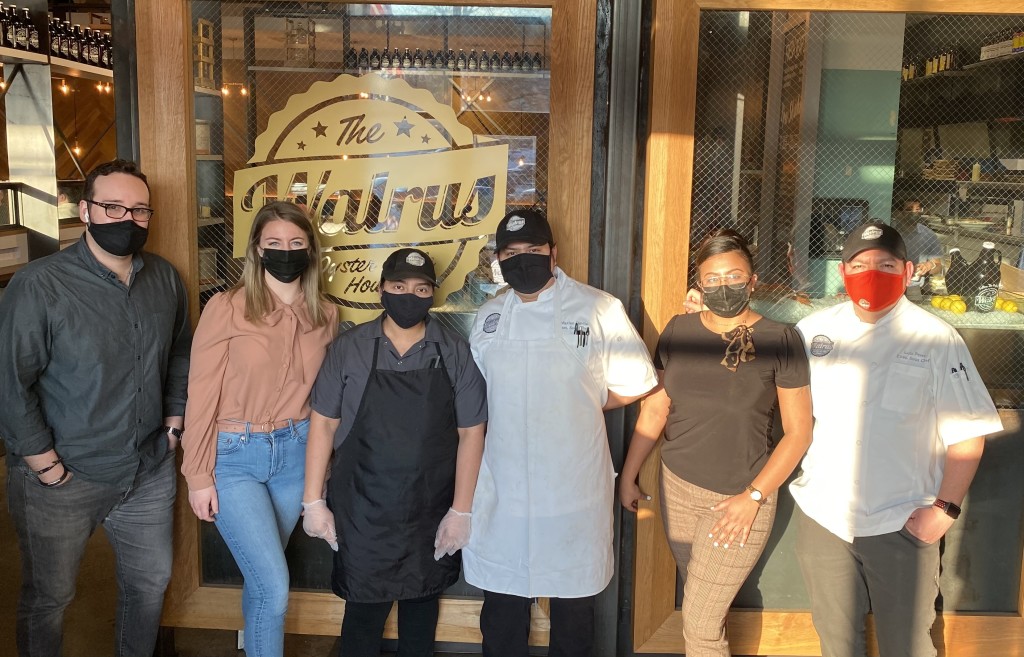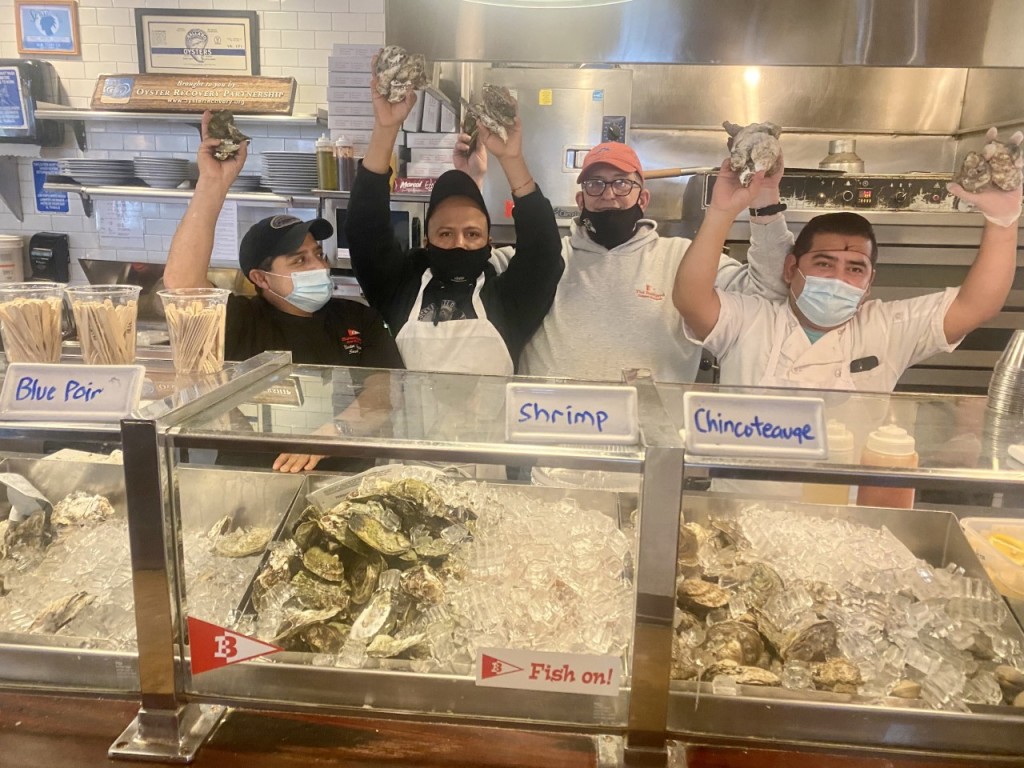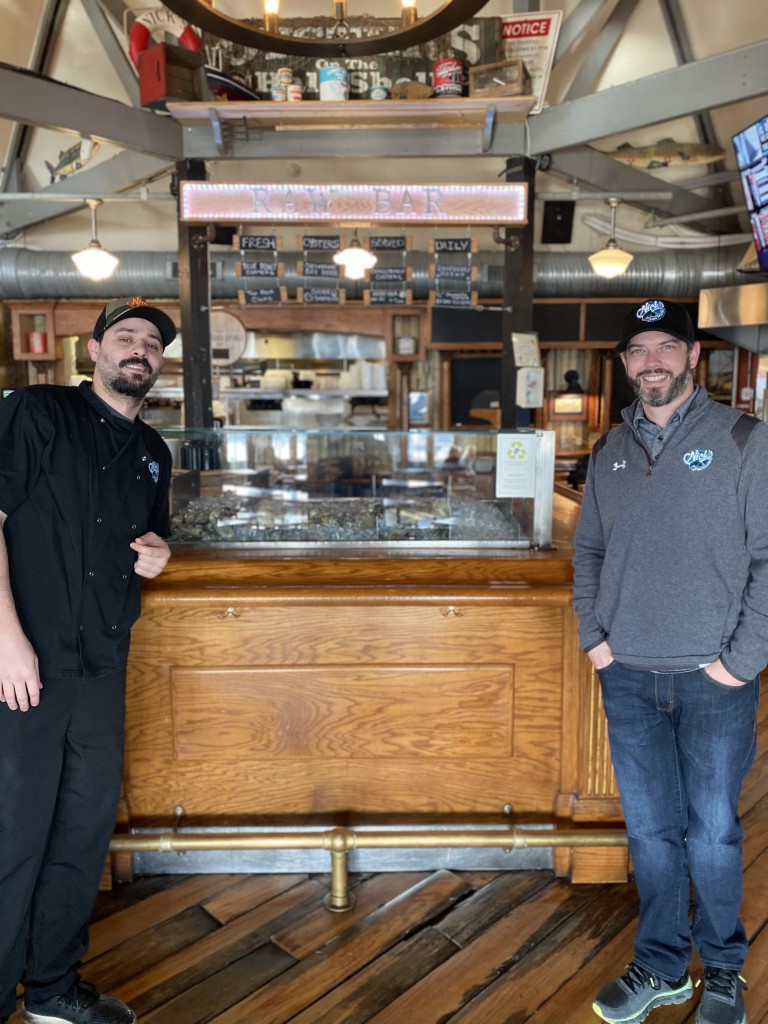
Despite the COVID pandemic, the Oyster Recovery Partnership (ORP) continued to recycle oyster shell for its Chesapeake Bay oyster restoration efforts, collecting 15,905 bushels (557 tons) of shell from seafood businesses and public drop sites in 2020. Out of nearly 300 participants throughout the Chesapeake Bay region, this year’s top 10 contributors are restaurants and seafood suppliers in Maryland and Washington, D.C.
“Last year posed a significant challenge for the seafood industry, especially restaurants, as they suffered through closures and capacity limits,” said Tommy Price, ORP’s Shell Recycling Alliance program manager. “We’re grateful that even through it all, our partners continued to save their shell, a true testament to their commitment to a cleaner, healthier Chesapeake Bay.”
The Top 10 Shell Recycling Alliance contributors of 2020 are:
- Boatyard Bar & Grill (Annapolis, Md.) 569 bushels
- Ryleigh’s Oyster Hunt Valley (Lutherville-Timonium, Md.) 563 bushels
- District Wharf Fish Market (Washington, D.C.) shared site Captain White’s Seafood City, Jessie Taylor Seafood 536 bushels each
- Congressional Seafood Company (Jessup, Md.) reclaimed from customer distribution sites: 506 bushels
- The Walrus Oyster & Ale House (Columbia, Md.) 457 bushels
- King Street Oyster Bar (Washington, D.C) 420 bushels
- The Walrus Oyster & Ale House National Harbor (Oxon Hill, Md.) 394 bushels
- The Salt Line (Washington D.C.) 377 bushels
- Nick’s Fish House (Baltimore, Md.) 361 bushels
- Sailor Oyster Bar (Annapolis, Md.) 339 bushels
“This year more than ever, we’ve seen the importance of supporting the people, businesses and organizations that make our local communities special,” said Meghan Olesen, Senior Restaurant Manager for The Walrus Oyster and Ale House. “The Walrus has been blown away by the way the community has rallied around us during a challenging time. We are proud to pay it forward by supporting organizations that are actively working to preserve and strengthen our futures, like ORP.”
It wasn’t just restaurants who stepped up. The public heard ORP’s call and recycled more shell at public shell collection dropsites than ever before. On average, each dropsite had an increase of 58 percent more shell in 2020 over 2019. With the market for oysters transitioning from restaurants, to seafood markets and direct to consumer, ORP’s 70 dropsites proved especially critical in collecting oyster shell saved by the at-home shucker.
Since the Shell Recycling Alliance’s launch in 2010, ORP has reclaimed 230,000 bushels of shell, which equates to 8,027 tons kept out of area landfills, approximately $380,000 saved by local businesses in waste collection fees, and enough substrate to support the planting of 1.15 billion spat on shell in local waters. The program is the nation’s largest shell recycling network with nearly 300 member businesses and over 70 public shell dropsites in Maryland, Washington D.C., Virginia and Pennsylvania.
Oyster shell is an essential building block for a healthy oyster population because it provides oyster larvae a place to attach and grow. In fact, every half shell is able to host up to 10 spat (baby oysters). Oysters play a vital role in improving Bay health by filtering excess nutrients from the water, and their reefs create habitat for a multitude of marine life.
After collection, shell is aged outdoors for one year, washed and then set with spat at the University of Maryland Center for Environmental Science Horn Point Laboratory Oyster Hatchery in Cambridge, MD. ORP then works with restoration partners to plant the spat-on-shell onto specially selected reefs throughout the Chesapeake Bay. To date, ORP has planted 9 billion oysters on more than 2,700 acres of oyster habitat in Maryland since 1993. Learn more about ORP, the nation’s leading nonprofit dedicated to the large-scale restoration of oyster reefs in the Chesapeake Bay, at oysterrecovery.org.
FOR MORE INFORMATION, CONTACT: Tommy Price, [email protected], 410-990-4970

Boatyard Bar & Grill

Nick’s Fish House
